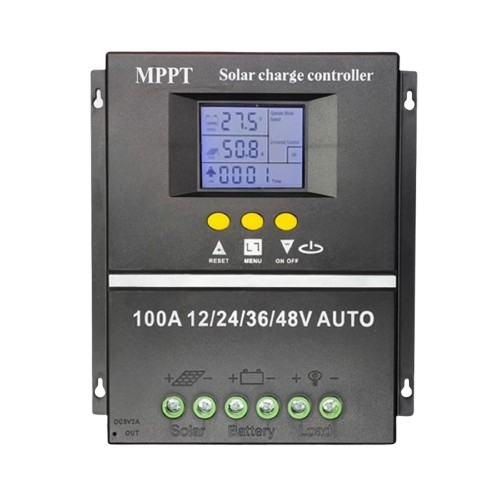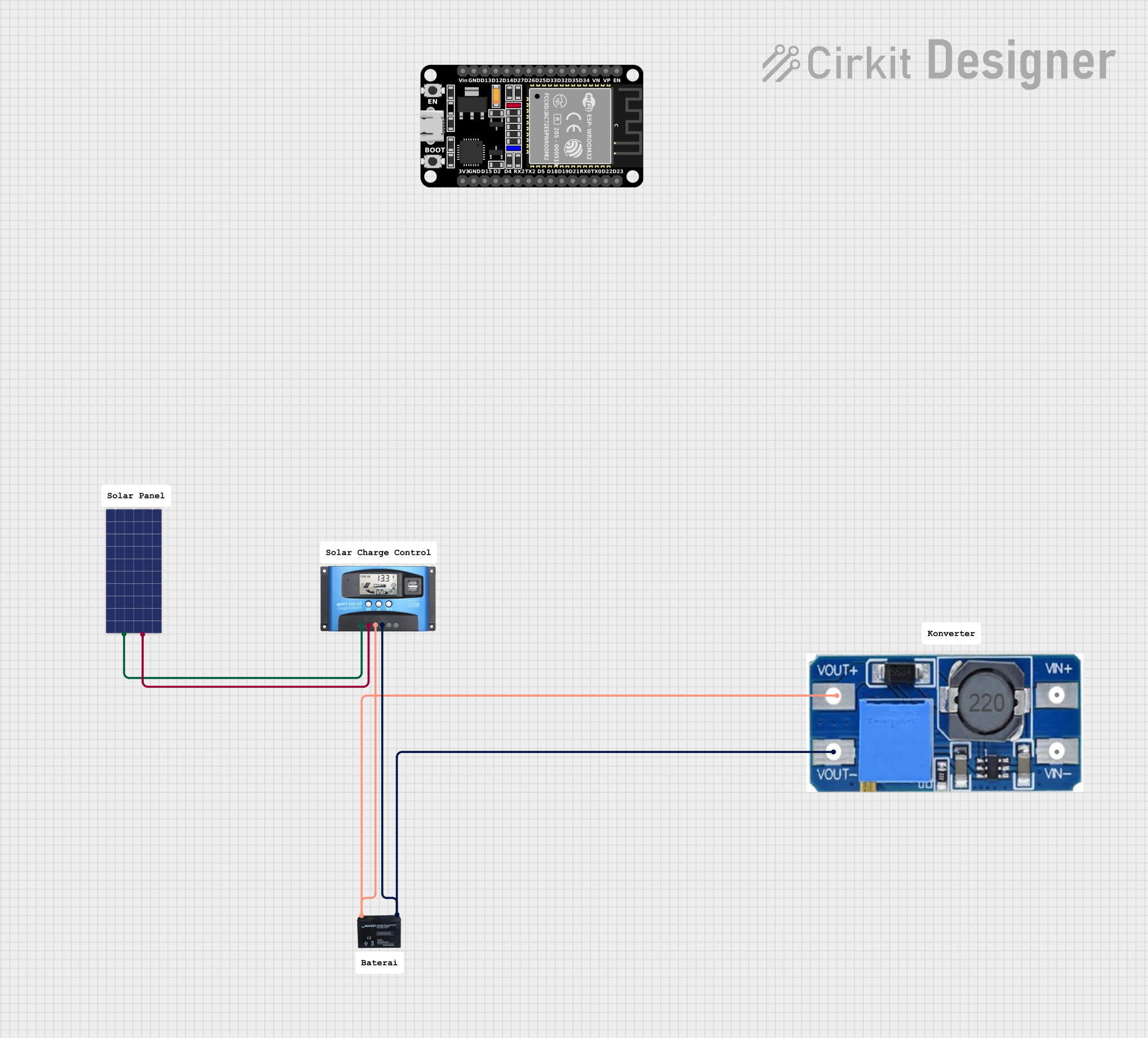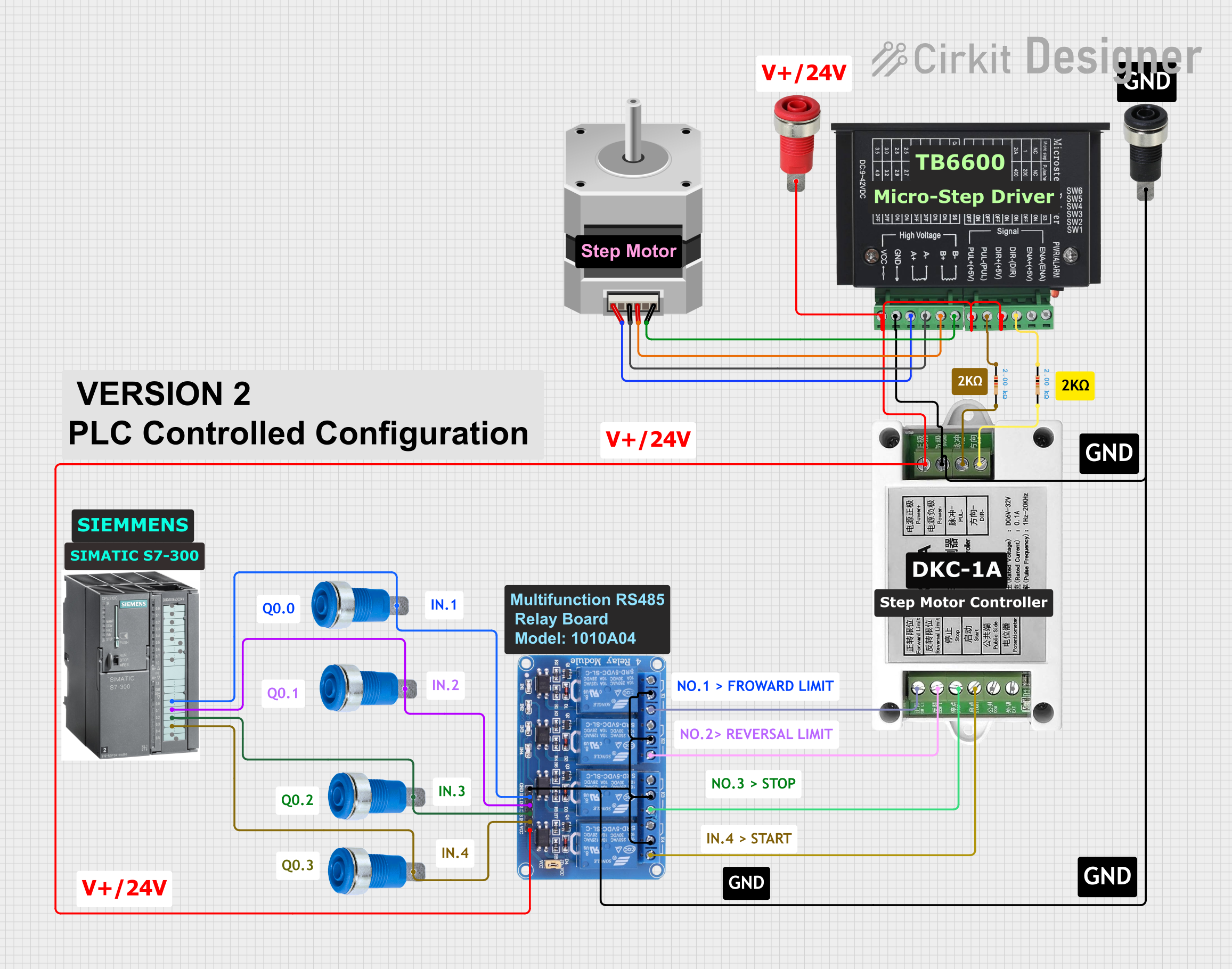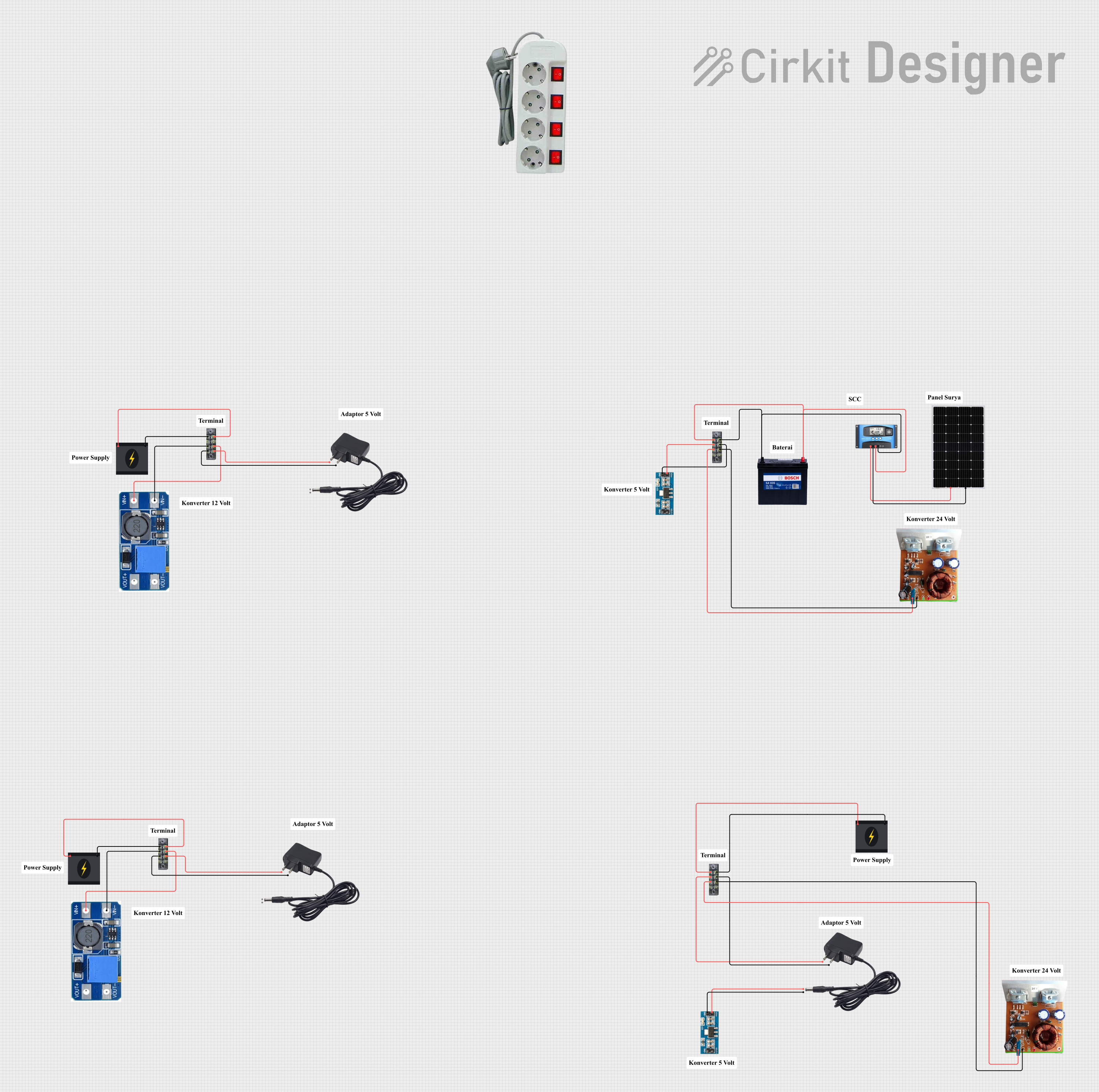
How to Use MPTT SCC SINOTRUCK: Examples, Pinouts, and Specs

 Design with MPTT SCC SINOTRUCK in Cirkit Designer
Design with MPTT SCC SINOTRUCK in Cirkit DesignerIntroduction
The MPTT SCC SINOTRUCK is a high-performance solar charge controller (SCC) designed for managing and optimizing the charging of batteries in solar power systems. Manufactured by CAR, this component ensures efficient energy conversion and battery protection, making it ideal for off-grid solar installations, automotive applications, and industrial energy systems.
Common applications and use cases include:
- Solar-powered vehicles, including SINOTRUCK models.
- Off-grid solar energy systems for homes and businesses.
- Industrial battery management systems.
- Renewable energy projects requiring reliable charge control.
Explore Projects Built with MPTT SCC SINOTRUCK

 Open Project in Cirkit Designer
Open Project in Cirkit Designer
 Open Project in Cirkit Designer
Open Project in Cirkit Designer
 Open Project in Cirkit Designer
Open Project in Cirkit Designer
 Open Project in Cirkit Designer
Open Project in Cirkit DesignerExplore Projects Built with MPTT SCC SINOTRUCK

 Open Project in Cirkit Designer
Open Project in Cirkit Designer
 Open Project in Cirkit Designer
Open Project in Cirkit Designer
 Open Project in Cirkit Designer
Open Project in Cirkit Designer
 Open Project in Cirkit Designer
Open Project in Cirkit DesignerTechnical Specifications
The MPTT SCC SINOTRUCK is engineered to deliver robust performance under various environmental conditions. Below are its key technical details:
General Specifications
| Parameter | Value |
|---|---|
| Manufacturer | CAR |
| Part ID | CAR |
| Maximum Input Voltage | 100V DC |
| Maximum Output Current | 30A |
| Battery Voltage Range | 12V/24V (auto-detect) |
| Efficiency | Up to 98% |
| Operating Temperature | -20°C to +60°C |
| Communication Interface | RS485, CAN Bus |
| Protection Features | Overcharge, Overload, Reverse Polarity |
Pin Configuration and Descriptions
The MPTT SCC SINOTRUCK features a terminal block for input and output connections, as well as communication ports. Below is the pin configuration:
Terminal Block
| Pin Number | Label | Description |
|---|---|---|
| 1 | PV+ | Positive terminal for solar panel input |
| 2 | PV- | Negative terminal for solar panel input |
| 3 | BAT+ | Positive terminal for battery connection |
| 4 | BAT- | Negative terminal for battery connection |
| 5 | LOAD+ | Positive terminal for load connection |
| 6 | LOAD- | Negative terminal for load connection |
Communication Ports
| Port | Description |
|---|---|
| RS485 | For external monitoring and control |
| CAN Bus | For integration with vehicle systems |
Usage Instructions
How to Use the Component in a Circuit
- Connect the Solar Panel: Attach the positive (PV+) and negative (PV-) terminals of the solar panel to the corresponding input terminals on the SCC.
- Connect the Battery: Connect the battery's positive (BAT+) and negative (BAT-) terminals to the SCC. Ensure the battery voltage is within the supported range (12V/24V).
- Connect the Load: If powering external devices, connect the load to the LOAD+ and LOAD- terminals.
- Enable Communication (Optional): Use the RS485 or CAN Bus port to connect the SCC to a monitoring system or vehicle control unit.
- Power On: Once all connections are secure, the SCC will automatically detect the battery voltage and begin operation.
Important Considerations and Best Practices
- Ensure Proper Polarity: Always double-check the polarity of all connections to avoid damage.
- Use Appropriate Wire Gauges: Select wires that can handle the maximum current without overheating.
- Monitor Operating Temperature: Install the SCC in a well-ventilated area to prevent overheating.
- Enable Communication for Monitoring: Use the RS485 or CAN Bus interface to monitor performance and troubleshoot issues remotely.
Arduino UNO Integration Example
The MPTT SCC SINOTRUCK can be monitored using an Arduino UNO via the RS485 interface. Below is an example code snippet for reading data:
#include <ModbusMaster.h>
// Instantiate ModbusMaster object
ModbusMaster node;
void setup() {
Serial.begin(9600); // Initialize serial communication
node.begin(1, Serial); // Set Modbus slave ID to 1
}
void loop() {
uint8_t result;
uint16_t data[2];
// Read battery voltage (register 0x3100)
result = node.readInputRegisters(0x3100, 2);
if (result == node.ku8MBSuccess) {
data[0] = node.getResponseBuffer(0); // High byte
data[1] = node.getResponseBuffer(1); // Low byte
float batteryVoltage = (data[0] << 8 | data[1]) / 100.0;
Serial.print("Battery Voltage: ");
Serial.print(batteryVoltage);
Serial.println(" V");
} else {
Serial.println("Failed to read data");
}
delay(1000); // Wait 1 second before next read
}
Notes:
- Use an RS485-to-TTL converter to interface the SCC with the Arduino UNO.
- Modify the Modbus slave ID and register addresses as per the SCC's documentation.
Troubleshooting and FAQs
Common Issues and Solutions
No Output from SCC
- Cause: Incorrect wiring or insufficient solar input.
- Solution: Verify all connections and ensure the solar panel is receiving adequate sunlight.
Overheating
- Cause: Poor ventilation or excessive load.
- Solution: Relocate the SCC to a cooler, well-ventilated area and reduce the load if necessary.
Communication Failure
- Cause: Incorrect RS485 or CAN Bus wiring.
- Solution: Check the communication cable connections and ensure the correct baud rate is configured.
Battery Not Charging
- Cause: Battery voltage outside supported range or damaged battery.
- Solution: Verify the battery voltage and replace the battery if needed.
FAQs
Q: Can the MPTT SCC SINOTRUCK handle multiple solar panels?
A: Yes, as long as the combined voltage and current do not exceed the SCC's maximum input ratings.
Q: Is the SCC compatible with lithium-ion batteries?
A: Yes, it supports various battery types, including lithium-ion, lead-acid, and AGM. Ensure the correct battery type is selected in the settings.
Q: How do I update the firmware?
A: Firmware updates can be performed via the RS485 or CAN Bus interface using the manufacturer's software.
Q: What happens if the battery is fully charged?
A: The SCC will automatically stop charging and switch to a float mode to maintain the battery's charge without overcharging.
This documentation provides a comprehensive guide to using the MPTT SCC SINOTRUCK effectively. For further assistance, refer to the manufacturer's user manual or contact CAR support.